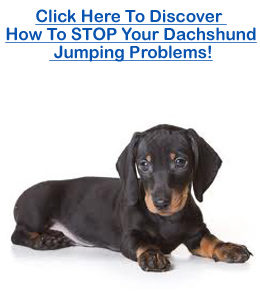Dachshund whelping is the act of giving birth to puppies. Most dachshund owners are concerned about their dogs getting pregnant and all the dangers involved, such as straining the dachshunds weak vertebrae. This is because of their elongated low bodies which are easily strained during pregnancy causing back problems. Some dachshund owners prefer to avoid dachshund pregnancy altogether. It is also a fact that some puppies may be born dead or may die within a few hours of birth.
Normal dachshund pregnancy usually lasts between 63 and 65 days. But where a dachshund is pregnant with so many puppies, she may give birth prematurely. When your dachshund is pregnant you should feed her healthy food and feed her more. Increase her food intake by 50%.
The grand finale of the whole pregnancy process is the whelping stage. This is when you get to meet your new puppies. There are signs to look out for to be sure that whelping is finally about to begin. Pay attention to these signs and never leave your dachshund alone during whelping, a situation may arise that may necessitate the presence of a vet and you will have to call one.
 The first sign of that dachshund whelping is about to happen is the temperature drop. But do not bank so much on this and walk around with a thermometer since it is not all dachshunds that have a temperature drop. The temperature may drop by a degree or two below normal just before whelping.
The first sign of that dachshund whelping is about to happen is the temperature drop. But do not bank so much on this and walk around with a thermometer since it is not all dachshunds that have a temperature drop. The temperature may drop by a degree or two below normal just before whelping.
Another sign is that you will notice that your dachshund has no of interest in food 24 hours before whelping. She will experience lack of appetite. You may also notice your dachshund licking her vulva. This is also a sign that dachshund whelping is on the way. Then you will notice a gray water balloon-like sac hanging out of her vulva. She will walk around for a while with it hanging out. The moment the sac is produced stay alert as the whelping will begin any time. Dachshunds mostly deliver within an hour of the water sac being presented. The sac will open and a clear fluid will come out. Delivery will follow shortly after.
During the dachshund whelping process, the first puppy is always the most difficult to deliver. The puppy may whine and groan during the contractions. Monitor the dachshund very closely and with a watch. If no puppy is delivered within first hour of the water sac showing, that may be a situation to call your vet. When the puppy is delivered it will be covered in a thin film, sort of like polythene. The mother must lick off the film from her puppy to facilitate breathing. If the film is not removed within 6 minutes of whelping, the dachshund may suffer brain damage. If the dachshund is unable to remove the film you should do so yourself.
The entire process of dachshund whelping can take between two to twenty hours. The dachshund will deliver one or two puppies and stay for some hours before delivering some more. It is both an exciting and tense moment.



